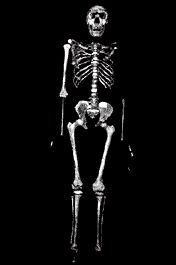Human evolution

Once Darwin had put foward his theory of evolution in 1859, it was not long before it was taken to its logical conclusion and applied to the origins of mankind.
Although this provoked uproar during the last century, and is still unsettling for creationists today, human evolution is now a major subject in its own right, incorporating biology, anthropology and archaeology.
It is also an extremely exciting subject with disputes on a range of different issues, and new evidence regularly overturning established theories. What can be broadly agreed upon, for the moment, is as follows:
The earliest hominid fossils have been found in East Africa and are about 3.5 million years old: it is estimated that we separated from the ape lines six or seven million years ago. These early hominids (Homo habilis ) walked upright and hunted in groups.
About 2.5 million years ago, the human brain started to increase rapidly in size. This was accompanied by a greater intelligence and tool making. By the time of Homo erectus, two million years ago, it is likely that some primitive form of language was being used. This trend continued through to Homo sapiens, modern humans, who probably first arose in Africa approximately 200,000 years ago.
The image is of 'Turkana boy', the fossilized skeleton of a Homo erectus found in Tanzania.
As the animation shows, the most dramatic changes that humans have undergone from their ape ancestors is bipedalism and a marked increase in brain size. There have been many suggestions for both of these developments, but no consensus of opinion.
| Next |



